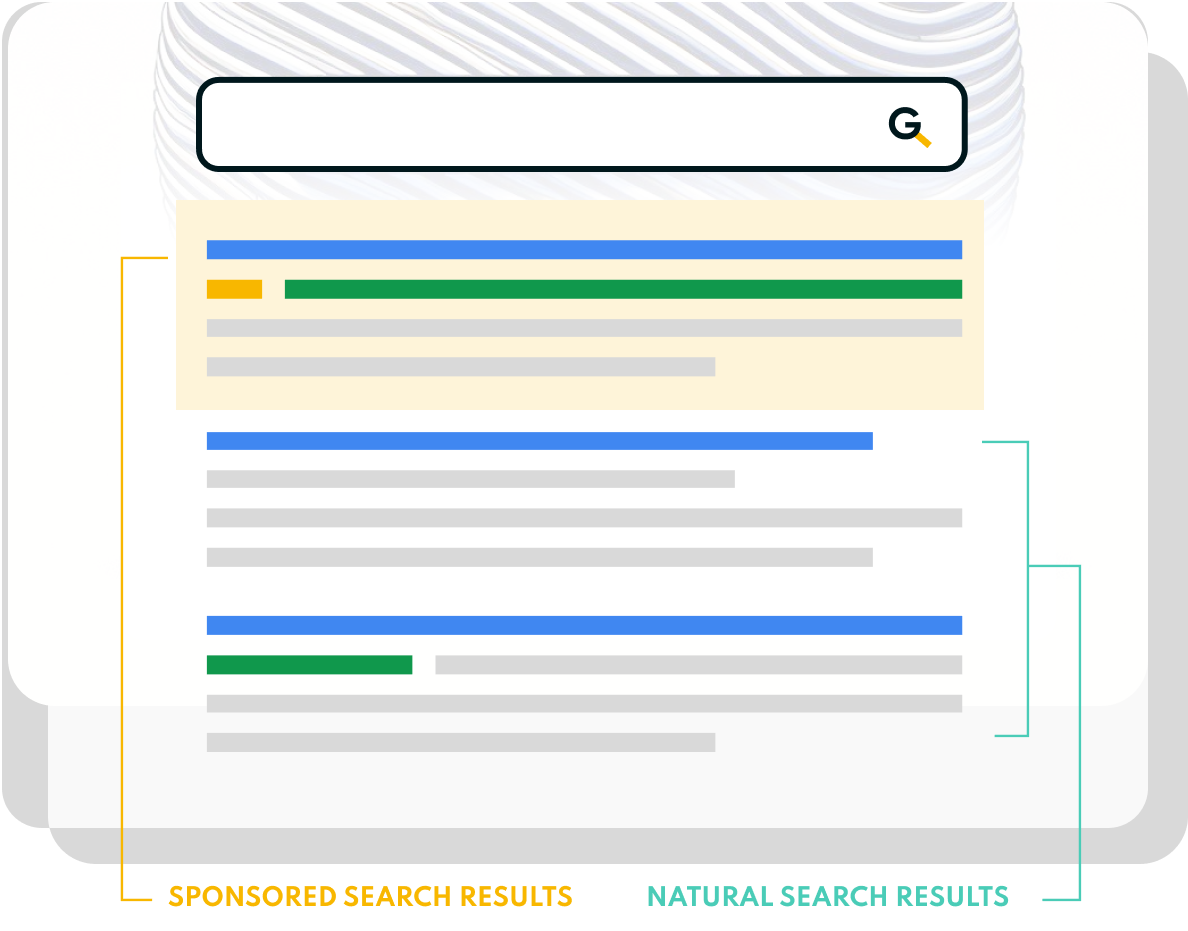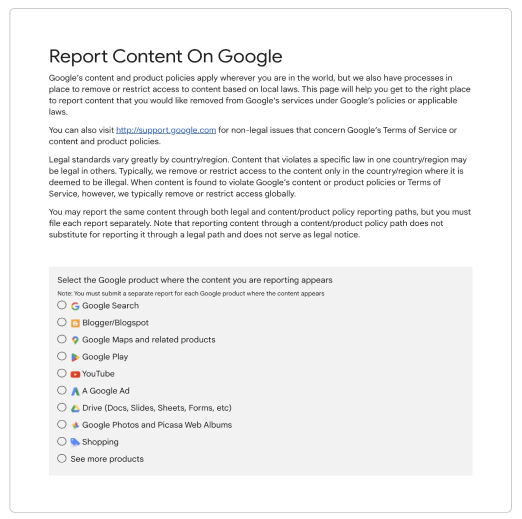I’m Ross Kernez—your go-to expert ai reputation management consultant. For over fifteen years, I’ve protected high-profile names, replacing reactive crisis control with a proactive, always-on system that shields your reputation, amplifies your strengths, and builds lasting credibility. Want your digital presence to stay sharp and secure 24/7? Let’s connect.
Ai Reputation Management Agent
I’m Ross Kernez—your dedicated AI Reputation Management Agent with more than 15 years of safeguarding executive digital legacies. Leveraging advanced machine‑learning insights, I suppress harmful content, correct misinformation in real time, and amplify assets that showcase leadership, trust, and vision. Whether you’re navigating a PR crisis or proactively shaping your online narrative, my AI‑driven strategies ensure your search results project the executive presence you deserve.
Ai Reputation Management Agent

as seen on
Do You Need to Remove The Following Pages
Speak With an Expert
Do you need an Ai online reputation management service?
| Option | Effectiveness | Cost |
| #1.Waiting For Negative Articles To Naturally Fall Off The First Page | Low | Free |
| #2.Submit a DMCA (Digital Millennium Copyright Act) Takedown Notice on Google | Low | Free |
| #3. Hire an SEO Expert ⭐️Ross Kernez ⭐️ to Clean Your Name or Brand | High | $$ |
| #4. Reaching Out To Journalists to Remove Content from Google Search | Low | Free |
| #5. Explore Legal Strategies to Remove Negative Content Online | Medium | $$$ |
| #6. Requesting an Update To a Negative Article Via Email Outreach | Low | Free |

What are Search Results?
Search results refer to the list created by search engines in response to a query. Search results can be broken down as follows:
Natural search results
(usually on the left-hand side of search engine’s results page) and;
Sponsored search results
(usually on the top and right-hand side of a search engine’s results page). Here you will see websites that have placed PAID ads within the search engine.


Who is Ross Kernez?

Why you should remove negative content online
Our feedbackReviews

How to suppress negative information about you in
Whether you’re battling FUD, fake reviews, or misinformation, I build a stronger online presence that reflects the integrity of your project. Let’s make sure your name—or your token—commands confidence and credibility from page one of Google.
Let's Dive Deeper on How online reputation management works
First, we flood Google with fresh, high-authority coverage your audience can trust—think thought-leadership columns, verified interviews, strategic press releases, and marquee collaborations on publications Google already ranks well in Search and beyond, all optimised for the search terms tied to your name. Next, we harden every digital property you own: your website, bio pages, and social profiles are tightened technically, updated often, and cross-linked so they broadcast relevance and authority. If a news article gets the facts wrong, we lodge a tactful correction with the editor; if content crosses the line into defamation or privacy abuse, we issue formal takedown or de-index requests on solid legal grounds. Finally, we keep a steady drumbeat of positive press and social engagement flowing, so fresh wins rise to the top while outdated or hostile links sink deep into the results—well past page one, where they’re all but invisible.

Because Google elevates fresh, authoritative coverage, a single negative headline from a major outlet can vault to the top of your search results—and stay there—simply by virtue of the publisher’s credibility and the story’s recency. That means every new article or broadcast mention effectively renews the shelf-life of the unfavorable narrative, forcing it back onto Page 1 each time it’s updated, syndicated, or quoted. The only reliable countermeasure is to meet Google’s relevance signals with an equally timely stream of positive, high-authority content: an exclusive interview in a respected magazine, a feature on your philanthropic work, or a verified announcement on a well-trafficked platform. By continuously injecting fresh, newsworthy material that reflects your true accomplishments, you can dilute the impact of isolated negative pieces, shift the conversation, and gradually reclaim the real estate at the top of the results page—where first impressions are formed.

Why Google Ranks News Very High in Search?
#1. Waiting For Negative Articles To Naturally Fall Off The First Page
In a competitive investment climate, waiting for negative press to fade on its own is a risk no serious blockchain project should take. If a harmful article or forum thread continues to gain engagement, its visibility won’t fade—it stays on page one, undermining investor confidence and delaying funding.
Our reputation management experts proactively protect your brand. We publish investor-friendly, trust-enhancing content in Arabic and English, fine-tune your digital footprint, and take swift action when your name surfaces in the wrong context. With constant monitoring and precision SEO, we ensure damaging narratives are buried, and your blockchain vision remains the focus.

#2. Submit a DMCA Takedown Notice on Google
When a regional news outlet or global blog republishes your proprietary content without permission, taking swift action is critical to protect your brand. Start by collecting the infringing URLs and capturing dated screenshots or archived versions that clearly show your ownership. Then, visit Google’s copyright-removal portal (support.google.com/legal/troubleshooter/1114905) and select the appropriate product—Search, YouTube, Images, and more. Fill out the form with your contact information, a detailed description of your original work, the infringing links, and a sworn statement asserting your rights. Google will evaluate your claim and may request additional documentation—so be prepared to respond promptly. Once approved, the offending URLs will be deli

#3. Hire an SEO Expert
When you partner with ai-focused reputation strategist Ross Kernez, you gain an expert who knows how to influence search results and control the narrative in a volatile digital landscape. Ross applies a multi-layered strategy—bilingual news placements, purpose-built microsites, high-impact press releases, and synchronized social media efforts—designed to elevate your credibility while suppressing FUD, outdated articles, and hostile forum posts. Every action is custom-built: Ross audits the keywords, platforms, and publishers that shape perception in the ai space, then powers a content engine that brings your best press forward and moves harmful links out of sight.
Outsourcing this mission isn’t just smart—it’s critical. In the 24/7 world of ai, your name or project can trend for the wrong reasons in seconds. Reputation management here demands constant vigilance, deep SEO expertise, and messaging that aligns with both mainstream media and blockchain-native communities. With Ross managing your onli

#4. Reaching Out To Journalists
Reaching out to a journalist—or any media outlet—to address unfavorable ai-related coverage requires tact, professionalism, and a clear, evidence-backed approach. Start by identifying the reporter and publication, then review their correction or update policies to ensure your request aligns with their editorial standards. In your personalized message (avoid templates), acknowledge the journalist’s role in fair reporting and clearly explain—supported by concise, verifiable proof—why the article is outdated, misleading, or factually incorrect. Include documentation or recent developments that reflect the full, current picture. If the facts are technically accurate but the context has shifted, consider suggesting an update that highlights recent achievements or progress. Offering an exclusive quote, interview, or dataset can turn your request into a value-added opportunity for the reporter.
Throughout the exchange, maintain a respectful and cooperative tone. Journalists are under no obligation to revise or remove content, and collaborative engagement is often more productive than confrontation. If the outreach yields no result, incorporate it into a wider reputation strategy—whether that involves legal guidance.

#5. Explore Legal Avenues
Taking a publisher to court under defamation or cyber-crime laws may seem like a straightforward solution, but legal action rarely results in the clean slate most ai founders and brands envision. Lawsuits can be expensive, drawn-out, and mentally draining—often lasting months or years with no guarantee that the harmful content will be taken down. Worse, filing a case can unintentionally reignite attention, as media outlets report on the lawsuit itself, amplifying the very content you aimed to suppress through what's known as the Streisand effect. The legal bar is high: you must prove that the statements are false, damaging, and made in bad faith—an uphill battle, especially when dealing with opinion pieces or vague allegations. Even a courtroom win can leave the article online, now accompanied by headlines about the legal dispute, and may damage future relationships with reporters who view the move as overly aggressive.
A more strategic approach for ai companies and leaders is proactive online reputation management. By addressing inaccuracies directly with editors, publishing factual and trust-building narratives in multiple languages, and populating search results with authoritative, positive content, you can reshape public perception—quietly and effectively. This forward-thinking strategy not only protects your digital footprint today but also preserves the goodwill and press relationships

#6. Requesting an Update To An Article To Remove Negative Results
When requesting an update from a journalist covering your project, lead with professionalism, transparency, and solid evidence—not confrontation. Begin your outreach by acknowledging the reporter’s role and commitment to accuracy, then present clear, verifiable proof that the article is outdated, misleading, or incomplete. Strengthen your case with updated data, recent milestones, or new context the original piece may have missed—ideally available in multiple languages for added clarity and accessibility.
Position your request as a mutual effort to maintain factual accuracy, not an attempt to suppress coverage. This collaborative tone encourages goodwill and makes it easier for the journalist to revisit and refine the story. The result is a more balanced piece that protects your reputation, enhances the outlet’s credibility, and helps shift negative search results further down the page—supporting a more favorable digital presence in the highly scrutinized ai space.

Who We Work With
We provide search suppression services for both individuals and corporations .
Below are some of the types of clients we've been able to work with over the years:
Individuals
1. Celebrities
2. Musicians
3. Politicians
4. Authors
5. Non-public individuals
Business
1. Fortunate 500 companies
2. CEOs & executives
3. Business crises
Advanced Tracking Technology
Our tailored suppression process is supported by advanced tracking technology, specifically designed for our search suppression services. This custom-built solution enables seamless monitoring of your campaign's performance and progress.
Key features of our technology include:
Analyzing sentiment associated with search results
Providing a comprehensive sentiment score
Tracking a wide range of brand-related keywords
Monitoring search results across various locations
With our proven suppression strategies, we effectively pushed negative content off the first page of Google search results.
We can help you push down negative results and secure positive news coverage in 146 countries and 51 languages
All countries
Europe
North America
Central America
South America
Asia-Pacific
Middle East
Africa
Central Asia
Kazakhstan
Mexico
France
U.S.
Serbia
Bangladesh
Bosnia and Herzegovina
Venezuela
Pakistan
U.A.E.
Switzerland
Hungary
Turkey
Romania
India
Spain
Kyrgyzstan
Kenya
Georgia
Vietnam
Slovakia
Peru
Chile
Belgium
Indonesia
Argentina
Germany
Poland
China
Estonia
Azerbaijan
Norway
Lithuania
Nigeria
Austria
Denmark
Portugal
Canada
Italy
U.K.
Malaysia
Finland
Uzbekistan
South Africa
Croatia
Bulgaria
Czech Republic
Australia
Netherlands
Brazil
Ukraine
Moldova
Singapore
Egypt
Philippines
Latvia
Japan
Sweden
Colombia
France
Serbia
Bosnia and Herzegovina
Switzerland
Hungary
Romania
Spain
Georgia
Slovakia
Belgium
Germany
Poland
Estonia
Norway
Lithuania
Austria
Denmark
Portugal
Italy
U.K.
Finland
Croatia
Bulgaria
Czech Republic
Netherlands
Ukraine
Moldova
Latvia
Sweden
Mexico
U.S.
Canada
Venezuela
Peru
Chile
Argentina
Brazil
Colombia
Bangladesh
India
Vietnam
Indonesia
China
Malaysia
Australia
Singapore
Philippines
Japan
U.A.E.
Turkey
Azerbaijan
Egypt
Kenya
Nigeria
South Africa
Pakistan
Kyrgyzstan
Uzbekistan
FAQs
How to Suppress Unwanted News?
What is an AI Reputation Management Agent and how does it work?
An AI Reputation Management Agent is a software‑driven service that continuously scans search engines, news outlets, blogs, and social platforms for mentions of your name or brand. Using natural‑language processing, it classifies each mention by sentiment and threat level, then prioritizes issues that could damage trust or valuation. The agent pairs machine learning with human oversight to craft targeted responses, ranging from polite review replies to full crisis statements. It also deploys positive, search‑optimized assets that push authoritative content higher in rankings, displacing harmful items. As a result, your digital narrative becomes both resilient and strategically aligned with business goals.
Why do high‑profile executives need an AI Reputation Management Agent?
Reputational risk is magnified for leaders whose decisions can sway markets or public opinion within hours. An AI Reputation Management Agent provides minute‑by‑minute vigilance, catching negative chatter before it trends and taints perception. It synthesizes massive data streams that a human team could never analyze in real time, flagging falsehoods and coordinating corrective action. The agent also curates thought‑leadership content that amplifies credibility, making it harder for detractors to dominate search results. Executives gain peace of mind knowing their personal brands are guarded by predictive analytics rather than reactive firefighting.
How does an AI Reputation Management Agent differ from traditional reputation services?
Conventional agencies rely heavily on manual monitoring, so they often discover crises only after they have ballooned. By contrast, an AI Reputation Management Agent operates 24/7 using algorithmic speed to detect tiny shifts in sentiment across dozens of channels. It automatically scores each finding, recommending the most efficient intervention—whether it’s SEO suppression, legal escalation, or social outreach. The platform learns from every engagement, refining its models to spot similar threats faster the next time. Human experts remain vital, but their insight is now focused on strategy rather than routine data triage.
What core technologies power an AI Reputation Management Agent?
At its heart, the agent combines natural‑language processing, machine‑learning classification, and entity resolution to recognize your brand across spelling variations and languages. A graph database maps how key narratives spread, helping forecast which outlets are likely to pick up a rumor next. Real‑time APIs pull data from social networks, news wires, and search indexes, ensuring up‑to‑the‑minute awareness. Automated content generators craft neutralizing statements and SEO‑rich positive articles, which human editors polish for brand tone. Together, these technologies create a feedback loop that continuously strengthens your online armor.
How fast can an AI Reputation Management Agent suppress negative content?
Speed depends on platform policies, legal considerations, and search‑engine crawl cycles, yet the agent’s automated detection shaves hours or even days off traditional timelines. Immediate takedown requests are filed for content that violates terms of service, while parallel SEO campaigns push verified assets upward so positive stories replace harmful ones. Sentiment dashboards update every few minutes, allowing teams to see suppression progress in near real time. Because machine learning predicts which keywords and outlets will amplify the negativity, preemptive content can be deployed to out‑rank it before indexing completes. The net effect is a dramatic reduction in the window during which damaging narratives can spread.
Can an AI Reputation Management Agent steer a brand through a full‑scale PR crisis?
Yes, the agent excels under high‑pressure scenarios by orchestrating rapid intelligence gathering, response drafting, and stakeholder communication. It maps how the crisis narrative evolves across media, quantifying reach and emotional impact so leaders can prioritize talking points. Automated alerts guide spokespersons on when to release statements, join conversations, or hold back to avoid fueling controversy. Meanwhile, the system’s predictive analytics test multiple message variants against historical data to identify phrasing most likely to calm audiences. This data‑driven cadence helps restore control faster than intuition‑based approaches alone.
How does an AI Reputation Management Agent handle multilingual monitoring?
Multilingual natural‑language processing pipelines ingest content in dozens of languages, then normalize it into a single scoring framework. Entity recognition maps transliterated or translated versions of your name, ensuring no overseas rumor goes unnoticed. Sentiment models are fine‑tuned for cultural nuances so sarcasm or idiom in Spanish, Mandarin, or Arabic is correctly interpreted. When a threat emerges abroad, workflow automation routes it to native‑speaking analysts who adjust messaging for local norms. This global vigilance prevents reputation surprises when expanding into new markets.
Is data privacy maintained when using an AI Reputation Management Agent?
Enterprise‑grade encryption secures data both in transit and at rest, while role‑based access ensures only authorized users can view sensitive dashboards. The agent complies with regulations such as GDPR and CCPA by anonymizing personal identifiers and honoring right‑to‑be‑forgotten requests. Audit logs track every action, creating a transparent chain of custody for legal defensibility. Regular penetration tests and third‑party audits validate security controls, guarding against breaches that could ironically damage reputation. Clients receive clear data‑processing agreements to maintain full compliance confidence.
How does machine learning enable proactive threat prediction?
Historical mentions are fed into classification models that learn which linguistic patterns often precede viral negativity. Time‑series analysis correlates spike patterns with eventual mainstream pickup, giving the AI Reputation Management Agent a kind of reputational radar. When similar conditions reappear, the system assigns high risk scores even if overall sentiment is still neutral, prompting early countermeasures. Continuous retraining incorporates the latest crises so predictions evolve alongside cultural trends. Proactivity thus replaces reactive clean‑up, saving both reputation capital and budget.
What data sources feed an AI Reputation Management Agent’s analyses?
The agent taps into public social APIs, licensed news feeds, dark‑web crawlers, review aggregators, and SEO datasets covering backlinks and keyword rankings. Proprietary scrapers capture niche forums where early rumors often hatch. CRM and customer‑support transcripts can also be integrated, allowing internal sentiment to guide external strategy. Natural‑language queries sift these varied streams for context, ensuring the agent understands not just what was said but why it matters. Holistic data fusion yields nuanced insights unavailable from any single source.
How customizable is an AI Reputation Management Agent for different industries?
Industry‑specific taxonomies allow the agent to recognize jargon, regulatory terms, and competitive landscapes unique to each sector. For healthcare, it flags HIPAA‑sensitive information; for finance, it recognizes compliance triggers such as insider‑trading allegations. Custom sentiment models adjust weighting so, for example, “volatile” might be negative for investors but neutral for stock‑market pundits. Reporting templates align with board‑level KPIs, highlighting metrics executives already track. This configurability ensures relevance whether a client is a Fortune 500 bank or a consumer tech startup.
Does an AI Reputation Management Agent replace human strategists?
Rather than replacing humans, the agent augments them by automating data collection and early threat triage. Strategic messaging, legal decision‑making, and nuanced media relations still rely on seasoned professionals who interpret context beyond the algorithm’s scope. The collaboration frees experts to focus on high‑value storytelling and stakeholder engagement instead of endless monitoring. With machine learning handling repetitive tasks, human creativity can shape narratives that resonate emotionally. Together, AI and humans form a defense system stronger than either element alone.
How does an AI Reputation Management Agent measure success?
Key performance indicators include reduced average ranking positions of negative content, accelerated removal times, and improved sentiment scores across monitored channels. The agent also tracks increases in positive asset visibility, such as higher click‑through rates on branded search queries and longer dwell times on authoritative content. Predictive accuracy statistics show how often early alerts corresponded to real crises, validating the model’s foresight. Cost avoidance from prevented PR spend is quantified to demonstrate ROI. Detailed dashboards convert complex data into executive‑level insights suitable for quarterly reporting.
What ROI can companies expect from deploying an AI Reputation Management Agent?
Return on investment manifests through higher lead conversion rates, reduced ad spend previously required to outshine negativity, and preserved market capitalization during crises. Automated workflows cut labor hours spent on manual monitoring and response drafting, translating directly into reduced operational costs. By safeguarding brand equity, the agent enables premium pricing and stronger negotiating leverage with partners. Quantifiable metrics—such as a decline in negative first‑page links—correlate with revenue upticks tracked over subsequent quarters. When a single reputation crisis can cost millions, proactive AI defense often pays for itself many times over.
Can an AI Reputation Management Agent improve search‑engine rankings?
Yes, SEO modules within the agent identify content gaps and suggest keyword‑rich articles, multimedia, and structured data to fill them. Machine‑learning models forecast which domains and backlinks will carry the most authority for a given niche, guiding outreach campaigns. Continuous crawler analysis spots algorithm updates and adjusts on‑page tactics to maintain compliance. By combining technical SEO with sentiment insights, the agent ensures positive narratives outrank detractors. Improved organic placement translates to sustained visibility without escalating paid‑advertising costs.
How does an AI Reputation Management Agent combat fake news and misinformation?
Fact‑checking APIs cross‑reference claims against trusted databases, assigning veracity scores that trigger escalating response tiers. If content is deemed false, takedown workflows activate platform‑specific reporting mechanisms while crafting public corrections. Graph‑analysis models trace how misinformation propagates, allowing targeted disruption of its most influential nodes. The agent then promotes verified sources to re‑balance the information ecosystem. Continuous surveillance ensures removed falsehoods do not resurface under new URLs or aliases.
Can small businesses benefit from an AI Reputation Management Agent?
Absolutely, because reputation stakes can be existential for companies with limited brand awareness. Scalable pricing tiers allow small businesses to access the same detection engines used by large enterprises, albeit with leaner feature sets. Automated review‑response templates handle day‑to‑day reputation tasks that owner‑operators lack time to manage. Real‑time alerts enable local businesses to address customer complaints before they balloon into viral backlash. Over time, improved ratings and search visibility level the playing field against larger competitors.
How secure is the data processed by an AI Reputation Management Agent?
End‑to‑end encryption, secure key management, and multi‑factor authentication protect client data from unauthorized access. Isolated tenant architecture ensures one client’s information cannot be cross‑referenced or accessed by another. Regular vulnerability scanning and bug‑bounty programs surface potential weaknesses before adversaries exploit them. Compliance certifications such as SOC 2 Type II provide independent validation of controls. This rigorous security posture means clients can entrust sensitive information without fear of compromise.
What is the onboarding process for an AI Reputation Management Agent?
Implementation begins with a discovery workshop where goals, brand guidelines, and threat history are mapped. API integrations are configured to ingest social, news, and internal data, while custom keyword lists teach the agent brand‑specific terminology. Baseline sentiment and SERP snapshots establish benchmarks against which progress will be measured. Training sessions equip teams to interpret dashboards and customize alert thresholds. Within four to six weeks, most clients transition from pilot to full deployment, armed with clear success metrics.
How does an AI Reputation Management Agent manage negative reviews?
Natural‑language classification sorts reviews by severity, legitimacy, and potential legal implications. Suggested responses are generated using tone and empathy parameters aligned with brand voice, then queued for human approval. Parallel sentiment‑boost campaigns encourage satisfied customers to share positive experiences, diluting the impact of isolated complaints. For defamatory or policy‑violating reviews, automated takedown requests follow each platform’s dispute guidelines. An ongoing feedback loop analyzes which response styles yield the highest resolution rates, refining future engagement.
Does an AI Reputation Management Agent create positive content or only curate existing material?
It does both, using AI‑assisted copywriting to draft press releases, blog posts, FAQs, and social updates that align with brand messaging. A semantic analysis engine ensures each piece targets keywords most likely to counteract negative narratives. Multimedia modules auto‑generate video scripts and infographic outlines to diversify content formats. Human editors review output for nuance and regulatory compliance, ensuring polished, on‑brand delivery. By balancing creation and curation, the agent maintains a steady pipeline of reputation‑enhancing assets.
How frequently are an AI Reputation Management Agent’s algorithms updated?
Continuous deployment pipelines allow minor model tweaks weekly, addressing shifts in language patterns and platform APIs. Major upgrades occur quarterly, incorporating larger training sets and new feature engineering that improve prediction accuracy. Clients receive release notes explaining enhancements and any new settings they can configure. A/B testing validates improvements before broad rollout to avoid unintended shifts in alert sensitivity. This iterative approach keeps the agent ahead of evolving digital landscapes.
Can an AI Reputation Management Agent integrate with social‑media dashboards like Hootsuite or Sprout Social?
API connectors push real‑time sentiment scores and priority alerts directly into existing social‑media management tools. Scheduled posts can draw from reputation‑approved content libraries, ensuring consistency across channels. Engagement analytics from the dashboard feed back into the agent, closing the loop on performance insights. Single sign‑on streamlines user authentication, reducing security friction. Such integration centralizes digital communication while preserving the specialized depth of the reputation platform.
How does an AI Reputation Management Agent support dedicated crisis‑communication teams?
During critical incidents, the agent’s war‑room interface aggregates live mentions, trending hashtags, and media inquiries in a single pane. Custom filters allow teams to isolate specific geographies or stakeholder groups, tailoring responses with precision. Pre‑approved message templates speed publishing without sacrificing brand control. Collaboration features track task ownership, ensuring no angle of the crisis is overlooked. Post‑mortem analytics dissect what worked, informing refinements to future crisis playbooks.
What role does sentiment analysis play within an AI Reputation Management Agent?
Sentiment engines parse linguistic cues, emoji, and even punctuation to categorize mentions as positive, neutral, or negative. Weighted scoring models account for author influence, meaning a critical tweet from a major journalist triggers higher alerts than an anonymous forum post. Trend‑line graphs reveal whether corrective actions are shifting sentiment back to positive territory. Granular tagging highlights recurring pain points, feeding back into product or policy improvements. Sentiment thus becomes both a monitoring metric and a strategic compass.
How do AI Reputation Management Agents comply with search‑engine guidelines while suppressing negativity?
Legitimate SEO techniques—such as authoritative backlinks, schema markup, and well‑structured content—are prioritized to avoid penalties for manipulative practices. The agent flags overly aggressive link‑building tactics and warns users before they violate guidelines. Crawl‑budget analysis ensures new positive assets are indexed quickly without triggering spam signals. Collaboration with legal teams guarantees any removal requests target policy violations rather than fair commentary, maintaining ethical standards. Compliance is built into every suppression workflow, safeguarding long‑term credibility.
Can an AI Reputation Management Agent remove defamatory content from the internet?
If content meets the legal definition of defamation, the agent coordinates with attorneys to issue cease‑and‑desist letters and DMCA notices. Parallel platform‑policy requests leverage terms of service that prohibit libel, increasing the odds of swift removal. SEO suppression techniques bury residual copies that might linger in search caches. Throughout the process, clients receive status updates and evidence logs suitable for courtroom use if litigation proceeds. While not every item can be erased, success rates improve when AI triage accelerates proper legal channels.
How does an AI Reputation Management Agent maintain transparency with clients?
Interactive dashboards display raw data sources, classification confidence scores, and action logs so clients can audit every step. Monthly executive summaries distill technical metrics into plain‑language insights linked to business KPIs. Alert preferences are fully customizable, preventing information overload while ensuring critical events never slip through. Regular strategy calls review progress, adjust goals, and incorporate emerging priorities. This openness builds trust and allows clients to co‑steer their reputation journey.
What advancements are on the horizon for AI Reputation Management Agents?
Emerging models will combine multimodal analysis—text, video, and audio—to catch reputational threats hidden in podcasts or livestreams. Federated learning may allow agents to improve collectively without sharing sensitive data across clients. Real‑time generative AI will soon craft crisis statements customized to each distribution channel’s character limits and tone norms. Integration with blockchain authentication could verify content origins, strengthening defenses against deepfakes. These innovations promise even stronger, faster, and more secure reputation protection.
How can organizations select the right AI Reputation Management Agent vendor?
Decision‑makers should evaluate track records, case studies, and the robustness of underlying models, ensuring they leverage state‑of‑the‑art NLP and ethical datasets. Security certifications, compliance posture, and transparent pricing signal maturity and reliability. A vendor willing to provide customizable dashboards and human strategic support often delivers superior outcomes. Trial periods or pilot projects reveal how well the tool integrates with existing workflows and cultural nuances. Ultimately, alignment between vendor capabilities and organizational risk appetite ensures a long‑lasting, fruitful partnership.
